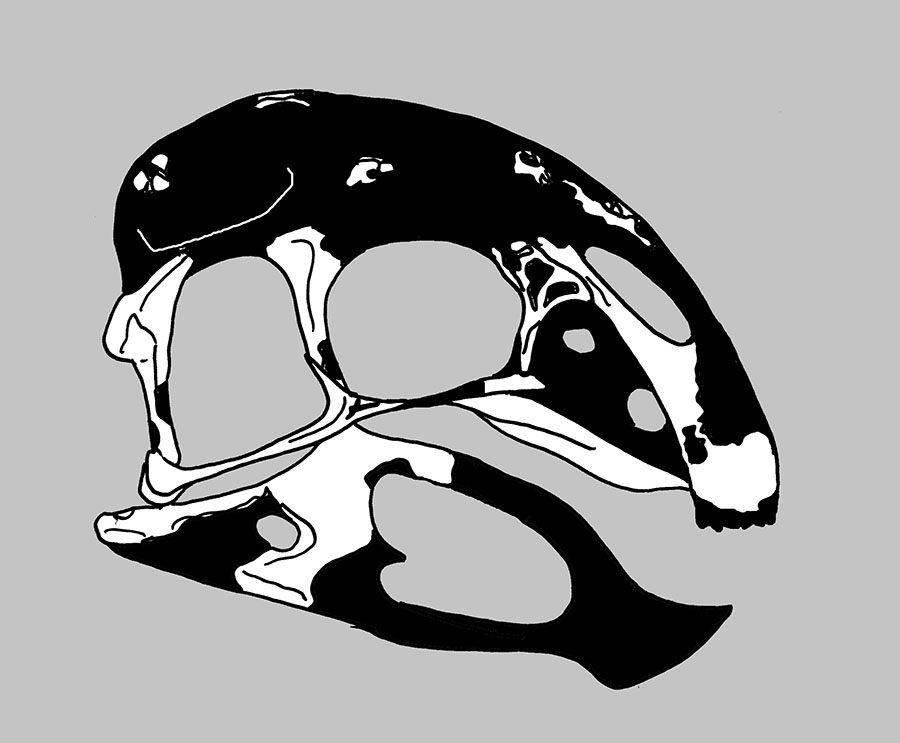
Genus: Wulatelong XU, TAN, WANG, SULLIVAN, HONE, HAN, MA, TAN, & XIAO,
2013
Etymology: The generic name derives from 'Wulate', Nei Mongol, China, the area from which the
specimen originated and Chinese, long, "dragon."
Species: gobiensis XU, TAN, WANG, SULLIVAN, HONE, HAN, MA,
TAN, & XIAO,
2013
Etymology: In reference to the Gobi Desert.
Holotype: IVPP V18409
Locality: Bayan Mandahu area, "The Gate" locality, 41.7439°N, 106.7444°E, Nei Mongol, China.
Horizon: Wulanshai Formation.
Biostratigraphy:
Age: Campanian Stage, Upper Senonian Subepoch, Upper Gulf Epoch, Late Cretaceous.
Material: Articulated skeleton consisting of much of the cranium, 11 dorasal, 16 caudal vertebrae, both scapulocoracoids, a partial sternum, a partial left humerus, much of the left manus, a nearly comlpete right pelvic girdle, and right hind limb.

Wulatelong gobiensis (modified from XU, et al, 2013), Holotype: IVPP V18409.